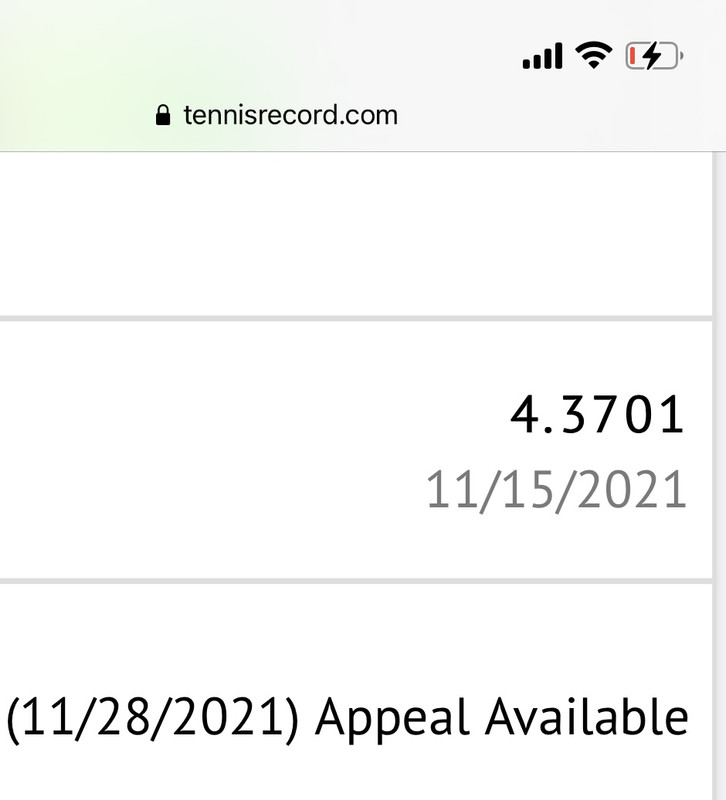travlerajm
Talk Tennis Guru
I just played my first USTA match in nearly 2 years.
8.0 mixed.
Yeah. I know I played like crap. I was rusty from not touching racquet in a week. I choked a few points in the super.
But…
After the match, I looked on UTR site, and my UTR has been updated to account for the new data.
My UTR has been downgraded… A lot. We played against a team with combined 11 UTR. Won equal games. My partner was a UTR 4. The other 3 players on court having been playing frequently this year so lots of data on them. Shouldn’t my match rating be a 7 then ?
UTR now says I’m a 4. A UTR 4.xx with 2 decimal place accuracy. Same as my female 3.5 mixed partners. Is it the rating decay with inactivity thing?
TennisRecord says I’m still about 4.4 NTRP (high 4.5) same as I’ve been for the last few years. TLS says I’m a 4.4 too based on my early 2021 results. And the USTA says my computer rating is in range of appealing up to 5.0. And the last year I played a few usta matches, in 2019, I made the TT 4.5 all-star team, which meant schmke had me at least 4.41.
But of course, UTR is the world’s most accurate algorithm. So maybe they know something others don’t?
I mean… I’m ok being a 4. This way my opponents won’t expect much. But UTR, just saying, you might want to double-check your algo and make sure your coder didn’t leave a glitch in there.
8.0 mixed.
Yeah. I know I played like crap. I was rusty from not touching racquet in a week. I choked a few points in the super.
But…
After the match, I looked on UTR site, and my UTR has been updated to account for the new data.
My UTR has been downgraded… A lot. We played against a team with combined 11 UTR. Won equal games. My partner was a UTR 4. The other 3 players on court having been playing frequently this year so lots of data on them. Shouldn’t my match rating be a 7 then ?
UTR now says I’m a 4. A UTR 4.xx with 2 decimal place accuracy. Same as my female 3.5 mixed partners. Is it the rating decay with inactivity thing?
TennisRecord says I’m still about 4.4 NTRP (high 4.5) same as I’ve been for the last few years. TLS says I’m a 4.4 too based on my early 2021 results. And the USTA says my computer rating is in range of appealing up to 5.0. And the last year I played a few usta matches, in 2019, I made the TT 4.5 all-star team, which meant schmke had me at least 4.41.
But of course, UTR is the world’s most accurate algorithm. So maybe they know something others don’t?
I mean… I’m ok being a 4. This way my opponents won’t expect much. But UTR, just saying, you might want to double-check your algo and make sure your coder didn’t leave a glitch in there.
Last edited:

